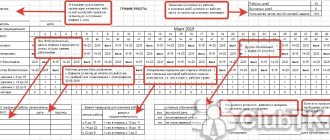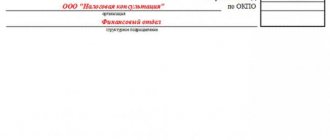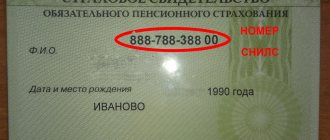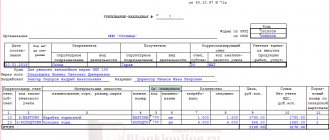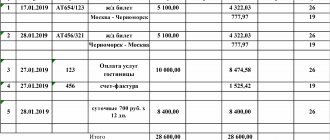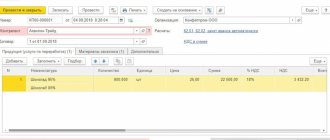Labor laws in the Russian Federation enable the person providing the work to regulate labor relations with employees using a variety of tools. Disciplinary action is one such tool. It is used when an employee fails to comply with labor discipline.
Absenteeism may result in punishment such as dismissal. A person's absence from work is not always considered absenteeism. Dismissal is not the only way to punish an incompetent employee. How to punish a truant who violates the organization’s labor regulations?
What is truancy?
Absenteeism should be understood as the absence of a person at the place of work during the entire shift, regardless of its duration, as well as for more than 4 hours in a row and without a valid reason. The legislative framework is represented by the following documents: “Labor Code of the Russian Federation” (Article 81, paragraph 6, part 1, 192, 193, 261, 392, 140); Resolution “On approval of documentation forms for labor and payment accounting.”
Information
It is not always that an employee who is not at work acts as a violator.
The concept of absenteeism in labor law
In accordance with paragraphs. “a” clause 1 part 1 art. 81 of the Labor Code of the Russian Federation, absenteeism is the absence of an employee from his workplace for more than four hours for a reason that is not valid. In addition, absenteeism may be considered actions in which the employee:
- did not go to work during the entire working day (the full duration of the working day does not matter);
- left work without good reason before the expiration of the employment contract or without warning the employer about its termination (if the contract was open-ended);
- did not show up for work in the last two weeks before dismissal (in case of termination of the employment contract at one’s own request);
- went on vacation on his own (even if the employee had the right to it);
- unauthorized use of days off (without the employer’s permission).
Absenteeism is a gross violation of labor discipline, the single commission of which is punishable by dismissal.
The following conditions are important:
Length of absence from work
It must be more than four consecutive hours during one working day or shift, regardless of its duration. If the duration of absence is exactly 4 hours or less, it will not be considered absenteeism.
Specific definition of an employee's workplace
In this case, two options are possible:
- the workplace is clearly indicated in the employment contract (for example, the exact name of the department or office);
- The documents do not indicate a specific location, so the workplace is considered to be the general territory of the enterprise.
In the first case, it is easier to punish the employee; you just need to prove that he was not in a specific place. In the second case, it turns out that if the employee was somewhere within the enterprise, they cannot fire him for absenteeism, even if he was not fulfilling his duties at that time.
Reason for absence
An employer can apply punishment only if the reason was unjustified. Otherwise, dismissal can be avoided. Valid reasons include:
- illness or doctor's visit;
- summons to court;
- participation in an accident;
- conscription;
- detention by law enforcement officers;
- summons to the internal affairs bodies;
- caring for a sick relative;
- other force majeure circumstances.
The fact that some reasons are considered valid may be determined in court.
It is worth considering that if the employee did not warn the manager in advance about the reason for his upcoming absence, it cannot be considered disrespectful. If possible, each of these reasons should be documented. For example, an employee can provide hospital certificates.
Availability of evidence
This means that the fact of absenteeism must be documented. Without evidence, it will not be possible to hold an employee accountable.
Only if all these conditions are met will the dismissal of an employee be legal.
The correct conduct of the dismissal procedure is also important.
How to properly record absenteeism?
How is a person’s absenteeism recorded and what consequences does it lead to?
First, it is necessary to write an act recording the fact that the person is absent from the workplace. It contains the following information:
- last name, first name and patronymic of the employee;
- date and time of the person’s absence from the workplace;
- date and time of the created document.
The act must be signed by 3 people from among the organization’s employees. The completed document is given to the HR specialist at the enterprise. On its basis, a mark is placed on the working time sheet for T-12 and T-13. Afterwards, the employer must receive a written explanation from the absentee.
The final decision on the punishment applied to a person for absenteeism rests with the employer. An employee may be punished for an offense in the form of:
- Note . The presented measure is one of the softest. In some cases, the employer draws up an order to issue a reprimand. Usually it is not recorded in writing and is a conversation conducted by the head of the organization.
- Reprimand . The difference between it and the remark is not big. An entry about him is not entered in the work book, but is noted in his personal card. Receiving several reprimands from an employer can result in a person being fired from the workplace.
- Dismissal . When making such a decision, it is enough to draw up 1 order to terminate the employment contract. In this case, a disciplinary order is not needed. The basis for making such a decision will be: memos, acts, explanatory notes written by the absentee, and time sheets. All these documents prove the fact that a person committed truancy.
Consequences of employee absenteeism
The absence of an employee leads to various negative consequences - from lost benefits in the form of unproduced goods or specified services, to the loss of a customer, penalties, losses and bankruptcy of the enterprise. The staff thinks little about this; their frivolous actions can cause the liquidation of the company.
However, not any employee absence is considered absenteeism . This includes his absence from work:
- During the entire working day, even if the shift is less than 8 hours;
- For four hours, but continuously;
- Without an official notification of intention to terminate the employment contract;
- After submitting a letter of resignation, but without working the two weeks required by law;
- Due to time off or vacation, but without receiving official permission from the employer.
All these legal grounds fit into the order for absenteeism without dismissal. The type of punishment chosen by the employer is also indicated here.
Choice of sanction
Labor legislation stipulates that for absenteeism, the person responsible may be reprimanded or reprimanded and entered into his personal file. The last resort is dismissal. For officials - civil servants and military - other types of punishment are provided - from warnings and severe reprimands, to deprivation of bonuses and insignia, as well as termination of contracts.
But even if the employee is guilty of absenteeism, he does not have mitigating circumstances, when choosing a sanction that fits into the order for absenteeism without dismissal, it is necessary to take into account:
- Degree of guilt;
- Reputation as a truant;
- Absent from work for the first time or such violations are systematic;
- The attitude of the perpetrator towards the offense.
Conscientious employees will find a reasonable explanation for the incident. In this case, you can do without dismissal, limit yourself to a verbal remark, or conduct a preventive conversation.
With the rest of the subordinates, you need to make a decision based on economic feasibility . It is possible that hiring and training a new employee will cost time and money, leading to financial losses. It is better to find a compromise option, limit yourself to a reprimand and enter it in your personal file, but think about a replacement in the future.
Valid reasons for absenteeism
Sometimes cases arise when a working person is not able to predict in advance his absence from work, and this fact will not be considered as absenteeism:
- Illness or injury. The supporting document will be a sick leave certificate.
- Unexpected hospitalization of a close family member.
- Fire or other emergency.
- Disaster.
- Problems with utility networks.
- An accident occurred while a person was moving to his place of work.
Information
The reason associated with late payment of wages is also considered valid. According to Part 2 of Article 142 of the Labor Code of the Russian Federation, if the employer does not pay wages for more than 15 days, then employees may not go to the workplace. Before doing this, they are required to notify the employer in writing.
Family circumstances considered a valid reason for absenteeism:
- birth of a child;
- death of a close family member.
In the presented case, the employee has the right to write an application for leave of up to 5 working days. This right is enshrined in Article 128 of the Labor Code of the Russian Federation.
Excused Absence
How to properly register absenteeism at work? The very fact of establishing an unreasonable absence from the workplace plays a huge role here. As already mentioned, if there are good reasons, the employee does not have to worry about absenteeism and responsibility - they simply do not occur.
Often, valid reasons for absence from work include:
- illness of a subordinate;
- death of loved ones;
- circumstances beyond the control of the citizen (natural disaster, flight delay, etc.);
- road accident;
- child's illness.
This is not an exhaustive list. Typically, issues regarding absenteeism are resolved on an individual basis. Courts and employers themselves can assess the extent to which a subordinate’s absence from work is justified. But, as practice shows, in all of the above situations, the judiciary takes the side of the cadre.
Dismissal procedure
To terminate a previously signed contract between an employee and an employer, a number of sequential actions should be taken:
| Action | Description |
| Documentary recording of absenteeism | Drawing up a truancy report using existing videos and reports. Afterwards, a letter is sent to the truant, notifying him of the preparation of such a document. The employer must follow a consistent procedure for registering documents. |
| Checking an employee to determine if he belongs to socially protected categories of people | An employer does not have the right to terminate relationships with women in position. Exceptional cases are: liquidation of an enterprise, closure of individual entrepreneurship. |
| Writing an explanatory note by a truant | Within a couple of days, the culprit must provide his superiors with a written explanation of the absenteeism. If this does not happen, then the boss or other employee must draw up a document refusing to explain the reason for the offense committed. The corresponding act is registered in a special journal. The lack of explanation for the committed act is not an obstacle to the application of certain penalties. |
| Taking into account all the circumstances that could contribute to absenteeism | The employer must carefully study all the details of the case. In the absence of valid reasons, he has the right to impose a disciplinary sanction on a person, including dismissal. |
| Writing a dismissal order | It indicates the reason for such a decision and a reference to Article 81, paragraph 6, part 1 of the Labor Code of the Russian Federation. It speaks about the legality of the employer’s actions. |
| Document registration | The order to terminate the employment relationship is registered in a special order register. |
| Providing information to the employee about the preparation of the relevant order | The truant must put his signature on the document. In case of refusal to sign the completed order, the corresponding refusal act is completed. |
| Entering information into the employee’s personal card and work book | They indicate the reason for the person’s dismissal. It is based on paragraph 6 of Article 81 of the Labor Code of the Russian Federation. |
| Payment of settlement | On the employee’s last working day, his wages and compensation for vacation balances are paid. Also on this day, the employee is given his work book. Before receiving it, the absentee must put his signature in the book for recording the movement of work records. If the employee is absent on the last day of his work, the HR department employee is obliged to send the person a letter about the need to appear at the place of his previous work for his work record or agree to send it by mail. |
| Confirmation of the fact of handing over the document | The employee must put his signature in the work book. With this action he confirms receipt of the book. |
Attention
Any discrepancy in dismissing an employee for absenteeism with the laws of the Russian Federation, expressed in incorrect documentation or failure to comply with the stages of termination of an employment contract, will become the basis for recognizing the dismissal as an unlawful act.
Process of documentation and dismissal in stages
Let us repeat once again that dismissing an employee for absenteeism is a complex undertaking that requires the employer to comply with a number of conditions. If errors occur during this procedure, the absentee, with the help of regulatory authorities, will be able to resume his position in the same organization.
Let's take a step-by-step look at all the nuances and subtleties of the process and try from a practical point of view to consider the most common mistakes made by employers. Let’s create, so to speak, step-by-step adequate instructions.
And for starters, the Video (Watch 2 Minutes).
Okay, let's start by discussing the stages (procedure) of dismissing an employee for absenteeism.
- Registration of the fact that the offender is absent from the workplace.
- Obtaining an explanation from the employee regarding this fact.
- Legal assessment of the explanation by management and legal services.
- Preparation of administrative documents necessary for dismissal.
- Dismissal: calculation and issuance of all necessary documents.
Below is a detailed analysis of each point of the scheme. All stages must be documented in detail and in order.
Stage No. 1. We will record the violation in an accessible way
Absenteeism from work is not always recognized as absenteeism. But the common features for all offenses of this type are absence from the workplace for more than four hours after the start of the shift or working day and the absence of any objective explanation for this act on the part of the offender.
Since the manager does not have the opportunity to verify on the day of the employee’s absence from work that the reason for his absence is valid, the fact must be recorded. This is done by creating an appropriate act or other document in accordance with the regulations of the organization’s local acts. In this document, it is necessary to indicate the time and place of preparation, the data of the person who compiled the document, and the persons present during this process (indicate the last name, first name, patronymic, position and, if necessary, other data).
On the first day of absence of a absentee from work, three similar acts are drawn up: at the moment the fact of absence is discovered, after four hours after the start of the work shift (day) and at the end of the work shift (day). Further, acts are drawn up daily, at the end of the shift (day), - thus documenting the fact of the absence of a absentee from work according to the scheme.
When the specialist returns to work and receives notification of the need to provide explanations, a report on the employee’s return to work must be drawn up.
akt-otsutstviya.doc (Download a complete sample (example) of an absence from work report Word 2020)
Stage No. 2. We demand an explanation from the offender
An employer, in accordance with Article 193 of the Labor Code, can impose a disciplinary sanction on an employee (dismiss for absenteeism) only after receiving a written explanation from him. If the employer decides to punish the violator without requiring him to write an explanatory note, then such punishment will be considered unlawful, and the employee will be able to file a complaint against his employer with the regulatory authorities.
In general, it is not legally established in what form an explanation should be required from the violator. However, it is better to receive an explanation in writing so that the employer has legal protection in the form of an explanatory note (there is documented confirmation of receiving an explanation from the employee).
The violator must provide an explanation within two working days. If this does not happen, then a corresponding report on the event is drawn up. A mark is placed on the time sheet indicating that the employee was absent for unknown reasons: either the letter code is “NN” or the numeric code is “30”. After clarifying the reasons for the absence, a mark corresponding to the actual reason for the absence is placed.
Stage No. 3. We conduct a legal analysis of the reasons for absenteeism
Based on the provided explanatory note, the employer must assess the validity of the reason why the employee was absent from the workplace. There are no criteria for assessing such reasons in labor legislation, so the employer must, when making a decision, proceed from considerations of reasonableness and from judicial practice in similar cases. It is correct if this issue is dealt with by the legal service of the enterprise.
The legal assessment of the arguments set out in the explanatory note is set out in a separate paper (such, as a rule, is an official or memorandum). This document must indicate, depending on the verdict, the following:
- If no objective reasons for the violation have been identified, it must be indicated that the employee, contrary to labor legislation (equivalent to a concluded employment contract), committed a disciplinary offense, expressed in absence from work for a certain period without a valid reason;
- Another case was when the offender was absent from work for reasons that justified him and was able to prove it. With this option, the latter’s absence from work is not recognized as absenteeism.
Help: Identifying the causes of the event, the critical stage. Imagine what if your employee is in the hospital and cannot tell you about it, or he left the workplace feeling unwell. You, without fully understanding the situation, fire him for absenteeism and thereby create a situation that is guaranteed to lead you to court for an illegal decision that threatens you with sanctions.
In general, the Labor Code does not contain a list of reasons for objective absence from work, but there is judicial practice, which the company’s management should rely on when assessing them.
If the manager finds the employee’s actions unlawful, he can also indicate in the document a proposal to apply a disciplinary sanction against the offending employee, the severity of which can vary from a warning or deprivation of bonuses (if the possibility of depreciation as a disciplinary punishment is approved in the local acts of the organization) to dismissals.
The completed document is given to the general director of the organization or an employee authorized by him for approval. The responsible employee will, at his own discretion, make a decision regarding the employee who skipped work: either management will agree with the punishment option proposed in the note (if any), or will decide on the punishment independently.
slujebnay-zapiska.doc ((example) memo Word 2020)
Stage No. 4. We draw up, approve and sign the order
If management has approved the most severe form of disciplinary action, that is, dismissal, then the responsible department (usually the human resources department) will need to draw up an order to terminate the employment contract using the unified T-8 form.
It is correct to consider the day of dismissal of the offending specialist as the last day he worked before committing the offense. After all, this is exactly what is stated in Art. 84.1 Labor Code of the Russian Federation. The date of drawing up the order and the day of dismissal will not coincide for objective reasons.
The order must be signed by the head of the enterprise, and the violator, in turn, must be familiarized with the contents of the document upon signature.
The situation is very conflicting and it is quite possible that the truant will refuse to sign the corresponding order. You must be prepared for this and if the situation develops in this way, draw up an appropriate act in the presence of witnesses.
prikaz-uvolnenie-progul.doc (Download a complete sample (example) of an order of dismissal for absenteeism Word 2020)
The terms of dismissal for an offense are specified in Art. 193 of the Labor Code of the Russian Federation, we read...
Stage No. 5. We make calculations, issue documents and work books
On the day of dismissal, the employer must pay the employee in full and give all documents that must be provided to the employee on the last working day.
The basis for the calculation is a note-calculation, which is prepared in pairs by two departments: personnel and accounting. The calculation must include the salary for the last month worked, debt to the employee, if any, as well as all unpaid benefits, bonuses, unused vacation pay, etc.
Help: Even if an employee quits for negative reasons, the company must make all payments required by law and meet the deadlines specified in the regulations. This is especially important when there is a conflict with a former employee. After all, any delay can lead to litigation and, as a result, costs and fines.
All required documents must also be issued: work book, medical book (if available), certificate of the amount of earnings for two calendar years, forms SZV-M, SZV-STAZH and others.
Reference. What to do if, after dismissal, the offending employee does not attend work and does not pick up the required documents, including the work book? That's right, you must send him a letter asking him to do it yourself, or get permission from him to send documents by mail.
If the former employee continues to ignore your letter, you will have to store the papers in the HR department until he picks them up.
Entry in the work book
The information that is written in the dismissal order is recorded in the work book. It must be recorded in full, without abbreviations or acronyms. The correctness of the written information is checked by the employee, after which he signs. Such a document is issued to the employee only on the day of his dismissal.
After the work permit is issued, an entry is made in the labor movement record book, which is also certified by the employee. If they refuse to take this personal document, management draws up a corresponding act.
Information
If a person who will soon be fired is absent from the workplace, then the boss must send him a letter about the need to pick up the book or agree to send it by mail.
Registration procedure without debarment
If the employer decides to formalize the punishment, he will have to issue an order for absenteeism without dismissal. In this case, it is necessary to take into account the time frame, namely:
- Upon the fact of a violation, an explanatory note is taken from the truant;
- If the culprit refuses to explain his actions in writing within two days, an act must be drawn up;
- Only one penalty can be imposed for a misdemeanor.
The punishment is applied no later than 1 month from the moment it became known . The maximum period during which a penalty can be imposed is 6 months from the date of violation. If the absence lasted more than 1 day, the countdown starts from the last day.
Sample order
In addition to the heading, signature and date, the document must indicate the circumstances of the violation, what it was expressed in and what documentary evidence is confirmed. To make it easier to navigate how an order for absenteeism without dismissal is issued.
Filling Features
You must enter information accurately, namely:
- “V.V. Aleksandrov, 1st category storekeeper of Housing Department No. 3 of the Repair and Operations Department branch, was absent from his workplace on May 03, 2020 from 08:00 to 17:00. He did not provide documents confirming a valid reason for absence.
- Alexandrov V.V. grossly violated labor discipline, failed to fulfill the duties provided for in Article 21 of the Labor Code of the Russian Federation, as well as the internal labor regulations of the enterprise.”
Next you need to indicate other reasons:
- Internal notes from employees and the immediate superior of the offending person.
- Acts of absence from work.
- Written explanation from the employee.
- Working time schedule.
- Other documents, for example, orders on previously imposed penalties.
Next, in the middle, the word “Order” is written, after which the sanction for the truant and instructions to officials are indicated. For example, a personnel employee must prepare an order, send copies of it to interested parties, and the violator’s immediate supervisor must make changes to the work time sheet and familiarize the employee with the order.
It is important to know: What payments are due upon dismissal during the liquidation of an enterprise
Special cases of dismissal for absenteeism
Not any absence from work will be counted as absenteeism. If an employee refuses to go to work on his day off, this will not be considered absenteeism. At each individual enterprise, there are exceptions under which people can be called back from vacation.
Information
A gross violation is the dismissal of a person who was in the hospital during the days he was absent. Even in a hurry, management is obliged to reinstate a dismissed person in the presence of a sick leave certificate, which is a supporting document. If information about illness is concealed, the judge may take the employer’s side.
Many organizations have repeatedly thought about this question: “Is it possible to fire a pregnant lady?” The answer to this question is clear: “No.” The Labor Code of the Russian Federation prohibits an employer from terminating an agreement concluded with a pregnant woman. If a pregnant woman allows herself to miss working days, she can only be fired upon liquidation of the enterprise. Other types of disciplinary sanctions can be applied to this category of employees: reprimands, reprimands.
Attention
Any delays in mandatory payments will result in the dismissed person filing a statement of claim to collect a fine from the employer for the delay in payments, as well as moral damages and legal costs. Such a claim is always satisfied, because the employee defends his rights in this case.
Drawing up an order
If the manager decides to reprimand, reprimand or dismiss an employee, a corresponding order is issued to the enterprise.
Basic information about the event is stated in the preamble of the order, followed by an indication of the degree of punishment. The form of the order depends on the decision made. So:
if the employer reprimands or issues a reprimand for violation of labor discipline, an order for the employee to take absenteeism without dismissal is drawn up in the form approved for local administrative documents, in compliance with the basic structure characteristic of this type of document - an indication of the name of the organization, a preamble, an administrative part on the issuance reprimand, signature of the manager and familiarization of the employee with the order;
if the manager decides to dismiss an employee for absenteeism, the unified order form T-8 is used, or the form of similar personnel orders approved by the enterprise is used.
When using a unified order form (T-8), all relevant fields of the form are filled in - indicate:
last name, first name, patronymic of the dismissed employee;
his position and the department in which he worked;
date of dismissal (this may be the day the order was issued if, after absenteeism, the employee was allowed to work until a decision was made on the degree of punishment for the disciplinary offense);
information about the reason for dismissal;
grounds (list of documents collected during the official investigation).
Reprimand for absenteeism (sample order in free form)
If the employer finds it possible to limit himself to imposing a reprimand, an order is drawn up to impose a disciplinary sanction. We offer you an order on absenteeism for an employee, a sample of which is used in the event that an employee is reprimanded for absence from work without a good reason.
This is important to know: Letter of resignation from a director to the founder: sample 2020
How to fire someone for absenteeism
Here are step-by-step instructions for dismissing an employee for absenteeism, so as not to have to deal with it in court later.
Step 1. Record the fact that the employee is absent from his workplace.
The employer documents the employee’s absence and collects evidence. He draws up an absence from work report signed by two or more witnesses. The document indicates the exact time during which the employee was not at work. Acts should be drawn up several times during the employee’s absence, one per day.
Step 2. Inform the organization's management.
If the employee has a direct supervisor, then a significant addition to the act is a memo that sets out the situation in detail and describes the actions that were taken to search (telephone calls, internal checks, etc.). We described the document in detail in the article “Drawing up a memo about employee absenteeism.”
Step 3. Record the absence on the timesheet.
Enter the code NN (failure to appear for an unknown reason) on the time sheet. The PR code should not be assigned before receiving written explanations.
Step 4. Obtain information about restrictions on dismissal.
Management should:
- clarify whether there are any restrictions on the dismissal of a truant worker at the initiative of the employer;
- check the deadlines established by law for such cases.
Step 5. Request a written explanation from the employee for his absence from the workplace.
The procedure for dismissal for absenteeism, according to the law, is not carried out without clarifying the reasons for absence from work. The employer analyzes the situation and makes sure that the employee missed work. It is necessary to obtain all the grounds for terminating an employment contract at the initiative of the employer. To do this, management requests written explanations from the subordinate. Two days are allotted for drawing up an explanatory note, after which the employer makes an appropriate decision on whether to apply any sanctions.
If there is no feedback, notification letters are sent asking for an explanation for the absence.
Step 6. Check the circumstances of absenteeism and the validity of the reasons.
The employer should ensure that the employee is not on annual leave or sick leave. The reasons why he is not at work are very different, but to make a decision on dismissal for absenteeism, it is necessary to understand whether there were valid reasons for absence from work. Analyze how the employee previously treated labor discipline and whether he had absenteeism or other violations.
In labor legislation there is no list of valid reasons due to which absenteeism is not considered such. In most cases, these situations are:
- illness, calling an ambulance for him or his relatives;
- administrative arrest;
- inability to get to the place of work due to transport problems (traffic jams, accidents, lack of tickets);
- natural disasters and catastrophes.
There are many reasons and it is impossible to foresee everything. The final decision is made by the head of the organization after he has been provided with written comments and other documents related to the incident.
Step 7. Issue a dismissal order for absenteeism.
If a decision has been made to terminate the employment contract, issue an order in the T-8 form (if using unified ones) or in a self-developed form (if approved). The order should make reference to Art. 81 Labor Code of the Russian Federation.
IMPORTANT!
Dismissal during vacation or temporary disability at the initiative of the employer is prohibited.
Step 8. Introduce the employee to the dismissal order against signature.
An important step in the instructions on how to fire an employee for absenteeism if he does not show up for work. He should be familiarized with the administrative document on collection against signature no later than 3 working days from the date of publication.
In case of refusal to familiarize yourself with the order, the employer draws up a report in any form signed by two or more witnesses.
Step 9. Enter a notice of dismissal in the work book.
The dismissal record entered into the labor record is duplicated in the last column of the personal card of the T-2 form, which is maintained by the organization for each employee. We refer to subparagraph “a” of paragraph 6 of part one of Article 81 of the Labor Code of the Russian Federation.
Step 10. Calculate.
On the last day of work, i.e. on the day of termination of the employment contract, all final settlements should be made with the employee: pay the wages due to him, compensation for unused vacation.
Step 11. Issue a work book.
This is done on the last day of work to avoid liability in court. The employee signs it, confirming that he agrees with all the entries. The fact that the work book was issued must be confirmed. A person signs in the book of accounting and movement of work books. By this he confirms that he received the document from the employer.
Step 12. Issue additional documents.
The last stage of the step-by-step procedure for dismissal for absenteeism with sample documents - on the last day of work, give the employee a certificate of the amount of wages for two calendar years (in form 182n) and a certificate in form 2-NDFL.


